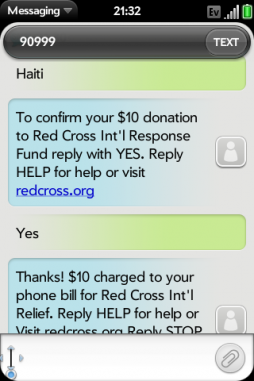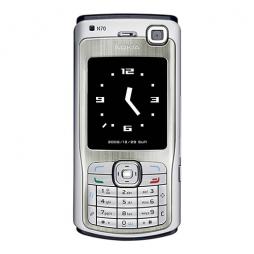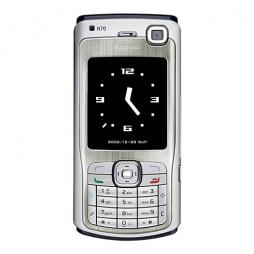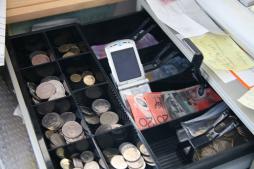mobile donations
Posted by AnneryanHeatwole on Jan 13, 2012
A simple text message can have a big impact. Mobile giving makes it easy to donate almost instantaneously after disaster strikes -- users authorize a mobile donation by texting a keyword to a specific short code, and the donation is then billed to the donor's mobile phone bill, eventually ending up with the nonprofit of choice.
Following the devastating Haitian earthquake of 2010 that left more than 200,000 people dead and more than 1 million Haitians homeless, mobile donations to Haiti totaled more than $43 million -- the first time mobile giving went mainstream in the United States on a large scale.
On the two-year anniversary of the Haitian earthquake, the Pew Internet Project has released "Real Time Charitable Giving," a report that delves into mobile giving and donors' motivations in the U.S.
The report, a collaboration among the Pew Internet Project, the Berkman Center for Internet and Society, the Knight Foundation, and the mGive Foundation, aims to provide a window into the motivations, benefits, and potential pitfalls of mobile giving campaigns.
Drawn from a sample of 863 individuals who made a mobile donation to the "Text for Haiti" campaign, the survey covers why the users gave, how they learned about the mobile donation campaign, how likely they were to share information about their mobile donation, and how likely they were to remain engaged with relief efforts.
| Mobile Donations and Disasters: Lessons from Haiti data sheet 505 Views |
| Countries: |
Haiti
United States
|
Posted by AnneryanHeatwole on Jan 12, 2012
Real-Time Charitable Giving data sheet 162 Views
Abstract:
Technology is increasingly relevant to Americans’ monetary contributions to the causes and
organizations they support. Previous research from the Pew Research Center’s Internet & American Life Project has found that one in five US adults (20%) have made a charitable contribution online, and that one in ten (9%) have made a charitable contribution using the text messaging feature on their mobile phone. Mobile giving played an especially prominent role during the aftermath of the January 2010 Haiti earthquake, as individual donors contributed an estimated $43 million to the assistance and reconstruction efforts using the text messaging feature on their cell phones.
This new mode of engagement offers opportunities to philanthropies and charitable groups for reaching new donors under new circumstances as messages spread virally through friend networks. At the same time, it poses new challenges, including the uncertainty in fund-raising groups about whether these new donors will remain engaged once they make their donation. In an effort to more fully understand the world of mobile giving, the Pew Internet Project, in partnership with the Berkman Center for Internet & Society at Harvard University and the mGive Foundation, and supported by the John S. and James L. Knight Foundation, conducted the first in-depth study of mobile donors. This report on those who gave to the “Text for Haiti” campaign is based on telephone surveys with 863 individuals who contributed money to the Haiti earthquake efforts using the text messaging feature on their cell phones, and who consented to further communications at the telephone number they used to make their donation.
Posted by AnneryanHeatwole on Mar 25, 2011
Today's Mobile Minute brings you coverage on smartphone security and malware, the struggle for mobile money systems in Africa to reach the level of M-PESA in Kenya, Facebook's move toward feature phones, the success of messaging-specific feature phones, and a guide to mobile donations for Japan.
- After more than 50 Android apps were discovered to be carrying malware in early March, the BBC took a look at mobile security. From the risks involved in keeping a lot of personal data on mobiles to ways in which malware can be used to manipulate phones, the article explores the need for mobile security around smartphone applications.
- In Africa, mobile banking has certainly garnered a lot of publicity and press. But All Africa looks at some of the drawbacks of mobile banking in specific countries where mobile banking systems are active; specifically, the article focuses on the "walled garden" system which makes it expensive to transfer funds between different mobile operators (sometimes with fees from five to 20 percent higher than a transfer between two users on the same mobile operator).
- Facebook recently bought Snaptu, a company that develops applications for feature phones. Snaptu developed Facebook's first feature phone app, and Facebook has now reportedly acquired the company for close to $70 million dollars. The purchase could indicate that Facebook plans to focus on reaching non-smartphone users around the world.
- Cellular-News reports that by 2015, messaging-specific feature phones will grow to encompass 1/3 of all shipped feature phones. Feature phones make up 75% of the handset market, and feature phones that are optimized for messaging services (such as "SMS, MMS, mobile email, and mobile IM") are expected to increase in popularity.
- Want to send a mobile donation to a specific cause for tsunami relief in Japan? Into Mobile has a roundup of shortcodes and the organizations that use them so that you can easily find the best way to donate.
[Mobile Minute Disclaimer: The Mobile Minute is a quick round-up of interesting stories that have come across our RSS and Twitter feeds to keep you informed of the rapid pace of innovation. Read them and enjoy them, but know that we have not deeply investigated these news items. For more in-depth information about the ever-growing field of mobile tech for social change, check out our blog posts, white papers and research, how-tos, and case studies.]
Image courtesy Flickr user QiFei
Posted by AnneryanHeatwole on Jan 11, 2011
It's a new year, and the Mobile Minute is back to bring you the latest. We've got coverage on doctors using mobile money for bus fares for fistula patient, Britain's minister of civil society questioning Apple's no-donation apps policy, the BBC's coverage on how hackers can eavesdrop on GSM calls, the California Supreme Court's ruling that police can search the cell phones of arrested people without a warrant, and CGAP's look at current, non-mobile money transfer systems in Haiti.
Posted by AnneryanHeatwole on Nov 11, 2010
The Mobile Minute is here to bring you coverage on the rise of smartphone sales around the world, a crop insurance plan in Kenya that uses mobiles to process claims and distribute money, the effect of the 2010 U.S. elections on PBS' mobile web and app usage rates, a pilot in Zambia that uses SMS to rapidly transmit HIV test results between rural clinics and hospitals, and mGive's new mobile donation options.
Posted by AnneryanHeatwole on Apr 14, 2010
We’ve written before about mobile giving during disasters, and the dramatic results such campaigns can have. But mobile giving can be used for non disaster-related fundraising drives as well and This American Life, a show on the US public radio network, is one of the latest organizations to embrace this trend.
| Radio and Text Donations: "This American Life's" Experience with Mobile Giving data sheet 8810 Views |
| Countries: |
United States
|
Posted by KatrinVerclas on Feb 04, 2010
This article was written by Jesse Feiler and edited by Katrin Verclas.
In the last few week, nonprofits in the United States have started to pay attention to fundraising via text - donations delivered to charities by donors simple sending a text message.
In aftermath of the January 2010 Haiti earthquake text donations to the Red Cross and other charities received enormous publicity, and generated a significant outpouring of donations. (SMS is an alternate term for text message – a160 character message sent over the mobile network)
| Texting for Charitable Dollars: The Definitive Guide to Mobile Fundraising data sheet 25943 Views |
| Countries: |
United States
|
Posted by admin on Jan 15, 2010
In the aftermath of the devastating earthquake in Haiti, relief organizations in the United States and Europe have been able to collect substantial numbers of donations from SMS fundraising campaigns. Just like after the 2004 Tsunami in Southeast Asia, the numbers are impressive. Two charities alone, the Red Cross Foundation and Yele, collected more than $4.7 million by mid-day Thursday (less than 48 hours after the first earthquake hit). UPDATE: The Red Cross has raised close to $20 million via its SMS campaign as of January 17th.
Industry insiders had expected $2 million in text message donations for all of 2009 at the end of October. However, a natural disaster of the gravity and dimension of the earthquake in Haiti has jumpstarted the awareness of aid organizations as to the potential power of raising funds quickly via SMS.
| SMS Text Donations and the Haiti Earthquake data sheet 11567 Views |
| Countries: |
Haiti
|
Posted by KatrinVerclas on Feb 29, 2008
Mobile phones aren’t just for calls anymore. Text messaging and web-enabled phones have made it possible for individuals to donate via their cell phone. In this MobileActive/NTEN webinar, we’ll explore how mobile fundraising works in North America from both a user and an implementation perspective. Then, we’ll discuss what it takes to implement a campaign, as well as the challenges and opportunities for using mobiles to augment your fundraising strategies.
WHEN? Thursday, March 6, 3 pm Eastern Time (-5 GMT)
WHERE? Online! > Register Today!
WHAT WILL I LEARN? How a mobile fundraising campaign works, what the challenges and opportunities are, what to expect for a return, and costs and needs to implement a campaign.
Register Today!
Posted by KatrinVerclas on Feb 13, 2008
Mobile donations to nonprofits have been stymied in the United States - hampered by the high fees charged for text message gifts that are then billed to a mobile phone customer.
When a donor gives to a nonprofit via text, more than half of the contribution goes to the telephone carrier, leaving less than 50% to the nonprofit, an unacceptable margin for most charities. Combined with low donation caps -- no more than $5 per SMS with a total of five SMS for a $25 donation -- and other charges for short codes and mobile vendors, nonprofits have determined that mobile giving is not worth it.
This is about to change.
If the Mobile Giving Foundation plays its cards right, mobile donations via text message may just explode this year.






.jpg)


